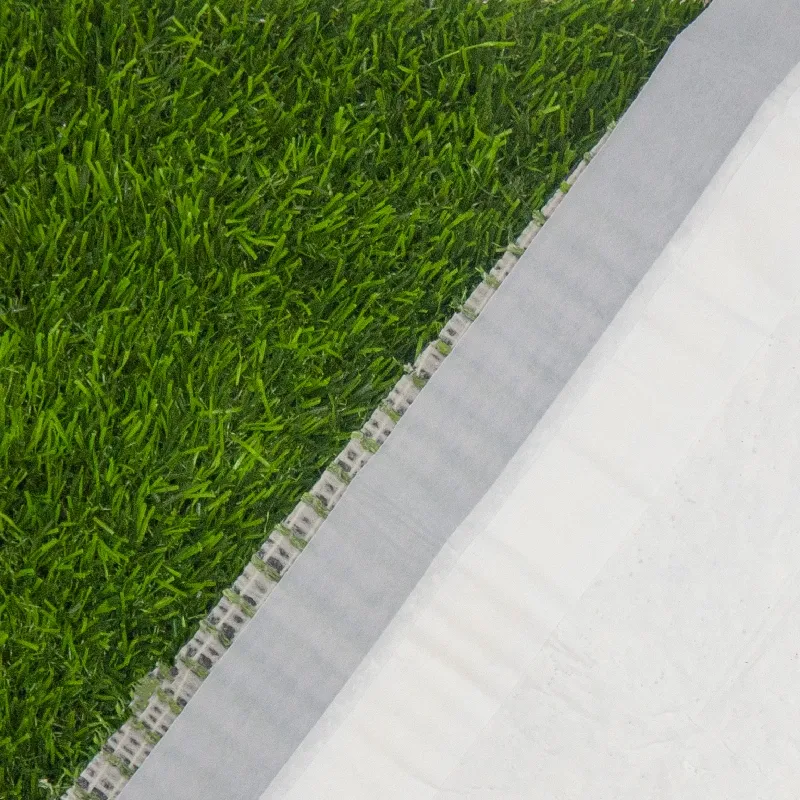
- Afrikaans
- Arabic
- Belarusian
- Bengali
- Czech
- Danish
- Dutch
- English
- Esperanto
- Estonian
- Finnish
- French
- German
- Greek
- Hindi
- Hungarian
- Icelandic
- Indonesian
- irish
- Italian
- Japanese
- kazakh
- Rwandese
- Korean
- Kyrgyz
- Lao
- Latin
- Latvian
- Malay
- Mongolian
- Myanmar
- Norwegian
- Persian
- Polish
- Portuguese
- Romanian
- Russian
- Serbian
- Spanish
- Swedish
- Tagalog
- Tajik
- Thai
- Turkish
- Turkmen
- Ukrainian
- Urdu
- Uighur
- Uzbek
- Vietnamese
Essential Steps for Preparing Your Space for Artificial Turf Installation
Dec . 09, 2024 17:41 Back to list
Preparing for Artificial Turf A Comprehensive Guide
Artificial turf has become an increasingly popular choice for sports fields, playgrounds, and residential lawns due to its durability, low maintenance, and aesthetic appeal. However, the successful installation of artificial turf requires thorough preparation. Here, we will outline the essential steps to ensure your project progresses smoothly from start to finish.
1. Planning and Assessment
Before diving into the installation process, it's crucial to conduct a thorough assessment of the area where the artificial turf will be laid. Evaluate the existing landscape, soil condition, and drainage capabilities. Additionally, determine the intended use of the turf, whether it's for recreational sports, landscaping, or pet areas, as this will influence the type of turf selected.
Create a detailed plan that includes measurements of the area, soil type, and existing vegetation. If there is grass or weeds, consider how you will remove them, as this is an essential step to prevent future growth from disrupting the turf.
2. Choosing the Right Turf
With a myriad of options available, selecting the right type of artificial turf is another critical step. Factors to consider include the pile height, fiber type, and infill material. Sports fields typically require a more durable turf, while residential use may prioritize aesthetics and comfort. Always consult with suppliers or installers to find the best match for your needs and climate conditions.
3. Site Preparation
Once you have your turf selected, it’s time to prepare the site. This involves several key steps
- Clearing the Area Remove any existing grass, weeds, or debris. This can be done using a sod cutter or a shovel for smaller areas. For larger fields, consider hiring a professional.
- Soil Grading Proper grading is essential to ensure adequate drainage. The sub-base should slope away from any structures to prevent water pooling. A general guideline is to maintain a slight slope of about 1-2% away from the center of the area.
- Compaction and Leveling After grading, compact the soil using a roller or plate compactor. This step is crucial to provide a solid foundation for the turf. Any bumps or low spots should be filled in to create an even surface. Ensure the ground is firm and stable.
4. Installing the Base Material
A quality base layer is a must for artificial turf installation. Typically, a mixture of crushed stone, gravel, and sand is used to create a stable sub-base that allows for proper drainage.
artificial turf preparation

- Layer Application Pour about 2-4 inches of crushed stone or gravel over the area. Use a rake to spread it evenly and achieve a level surface. Follow this with a layer of sand, usually about 1 inch thick, which helps to create a smooth foundation.
- Compaction Just like with the soil, compact the base material thoroughly
. This will provide a firm footing for your artificial turf and enhance its longevity.5. Turf Installation
Once the base is prepared, it’s time to install the turf
- Roll Out the Turf Unroll the turf and lay it in the desired direction. Make sure that the edges align and that there’s minimal overlap. For larger areas, consider cutting the pieces to fit together seamlessly.
- Seaming Use adhesive or seaming tape to connect adjacent pieces. Ensure the fibers are aligned to guarantee a natural look.
- Infill Application Depending on the type of turf, you may need to add infill, such as rubber granules or sand, to provide weight, enhance durability, and improve the turf’s feel underfoot. Spread the infill evenly across the surface.
6. Final Touches
After the installation is complete, brush the turf with a power broom to help the fibers stand upright and evenly distribute the infill. Check for any imperfections and make necessary adjustments.
7. Maintenance and Care
Lastly, while artificial turf is low maintenance, some care is still required. Regularly removing debris, rinsing off dust, and occasionally adjusting the infill will ensure your turf stays in excellent condition. Follow the manufacturer’s guidelines for specific maintenance recommendations.
Conclusion
Artificial turf can offer a beautiful and practical solution for various applications, but its success heavily relies on proper preparation. By carefully assessing the area, selecting the appropriate turf, and meticulously preparing the site, you can enjoy a stunning, low-maintenance outdoor space for years to come. Whether for sports, pets, or aesthetic appeal, investing time in proper preparation will yield lasting rewards.
-
The Benefits of Artificial Turf for Indoors
NewsJul.15,2025
-
How Artificial Grass Suppliers Ensure Quality Products
NewsJul.15,2025
-
Artificial Grass and Pets: A Space for Relaxation
NewsJul.08,2025
-
Balcony & Outdoor Decoration with Artificial Grass
NewsJul.08,2025
-
Best Indoor Artificial Grass for Home
NewsJul.07,2025
-
Best Pet Turf for Dogs: Safe & Durable Artificial Grass Options
NewsJul.07,2025
Products categories









